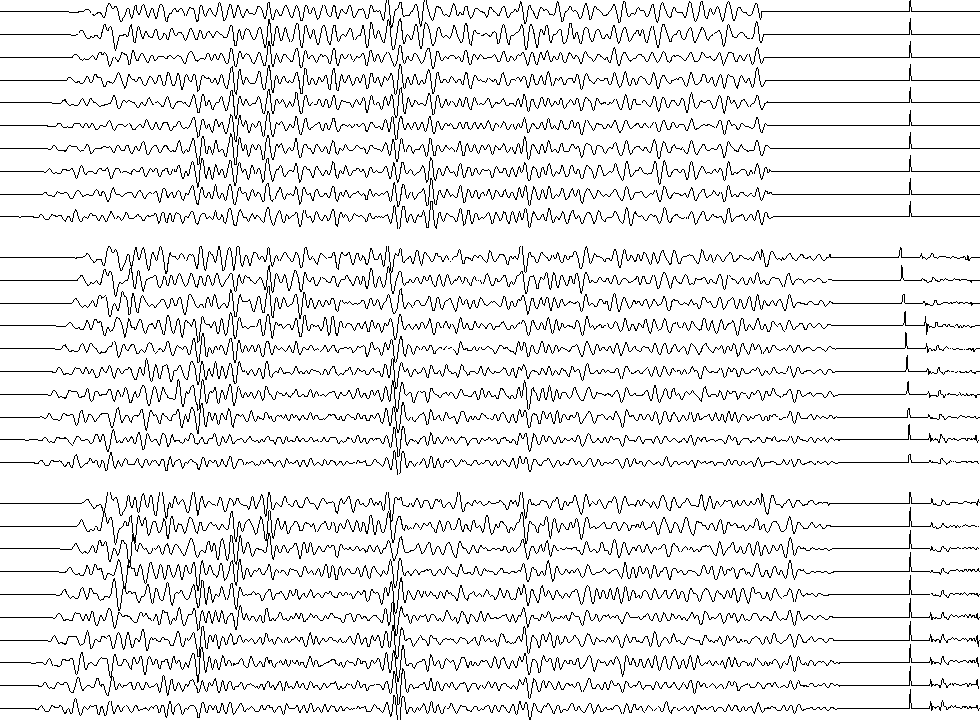![[*]](http://sepwww.stanford.edu/latex2html/cross_ref_motif.gif) , we see
that the quality of the deconvolution deteriorated with offset.
To test the idea that deconvolution would work better after
normal moveout, I prepared Figure 6.
, we see
that the quality of the deconvolution deteriorated with offset.
To test the idea that deconvolution would work better after
normal moveout, I prepared Figure 6.![[*]](http://sepwww.stanford.edu/latex2html/cross_ref_motif.gif) deconvolution was considered
deconvolution was considered
to be a one-dimensional problem.
We ignored spatial issues.
The one-dimensional approach seems valid for waves
from a source and to a receiver in the same location,
but an obvious correction is required for shot-to-receiver
spatial offset.
A first approach is to apply normal-moveout correction
to the data before deconvolution.
Previous figures have applied a t2 amplitude correction
to the deconvolution input.
(Simple theory suggests that the amplitude correction should be t,
not t2, but experimental work, summarized
along with more complicated theory
in IEI, suggests t2.)
Looking back to Figure ![[*]](http://sepwww.stanford.edu/latex2html/cross_ref_motif.gif) , we see
that the quality of the deconvolution deteriorated with offset.
To test the idea that deconvolution would work better after
normal moveout, I prepared Figure 6.
, we see
that the quality of the deconvolution deteriorated with offset.
To test the idea that deconvolution would work better after
normal moveout, I prepared Figure 6.
 |
Looking in the region of
Figure 6
outlined by a rectangle,
we can conclude that NMO should
be done before deconvolution.
The trouble with this conclusion is that
data comes in many flavors.
On the wider offsets of any data (such as Figure ![[*]](http://sepwww.stanford.edu/latex2html/cross_ref_motif.gif) ),
it can be seen that NMO destroys the wavelet.
A source of confusion is that the convolutional model can occur
in two different forms
from two separate physical causes,
as we will see next.
),
it can be seen that NMO destroys the wavelet.
A source of confusion is that the convolutional model can occur
in two different forms
from two separate physical causes,
as we will see next.